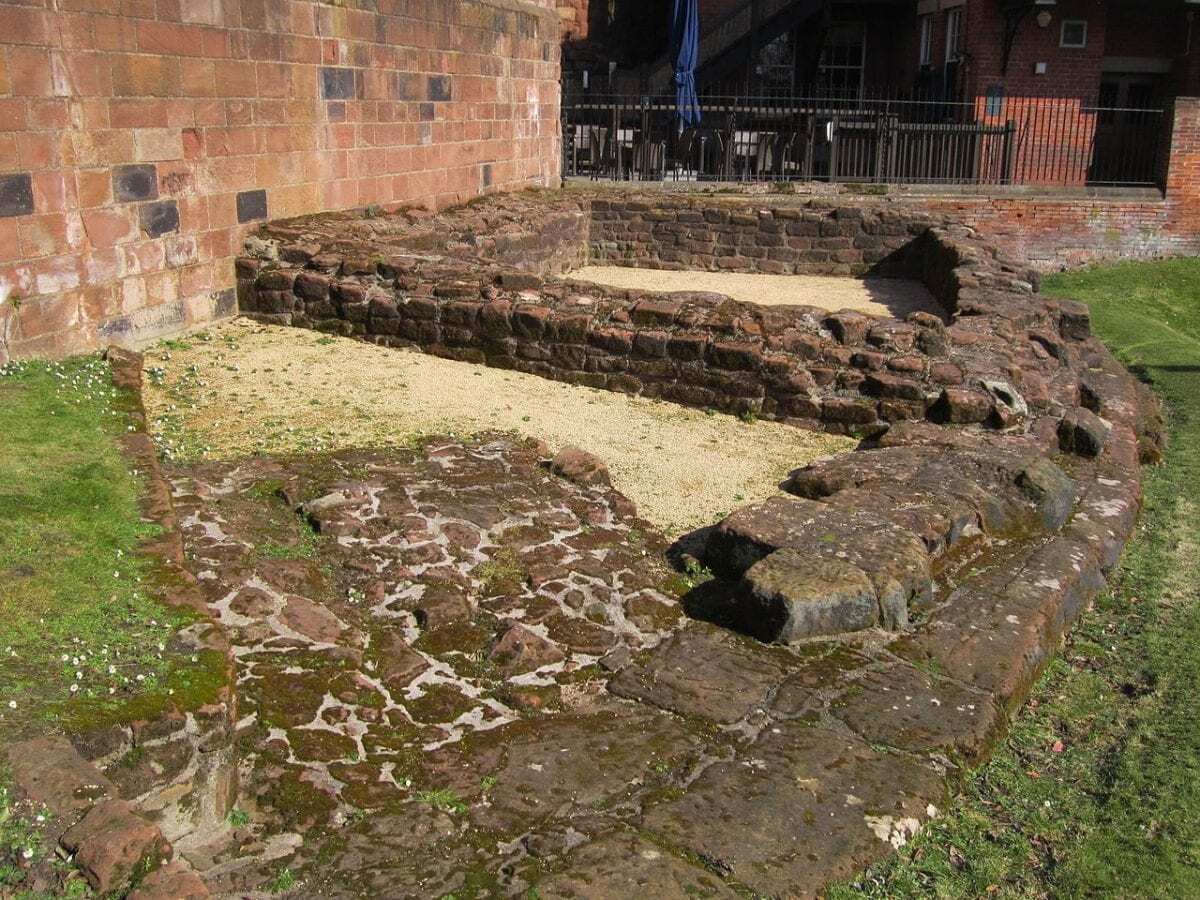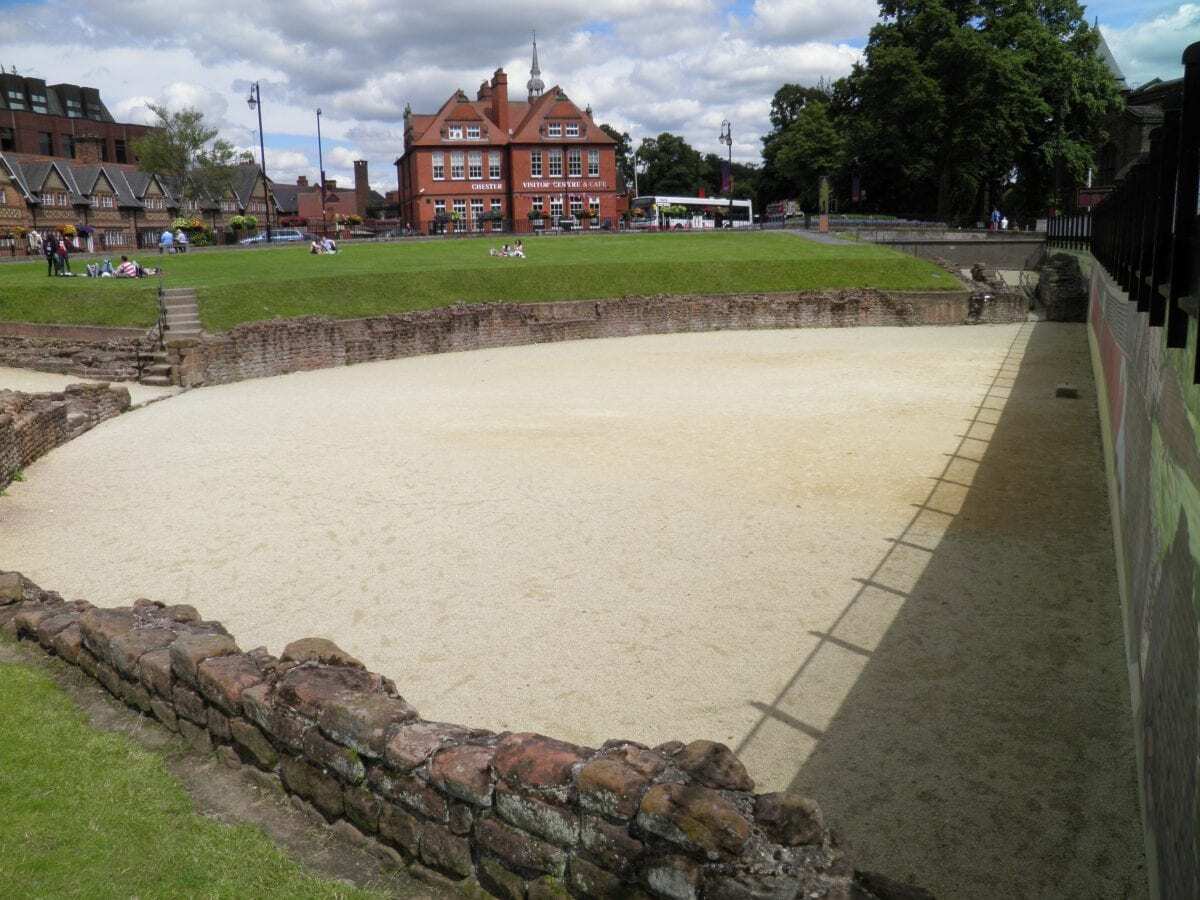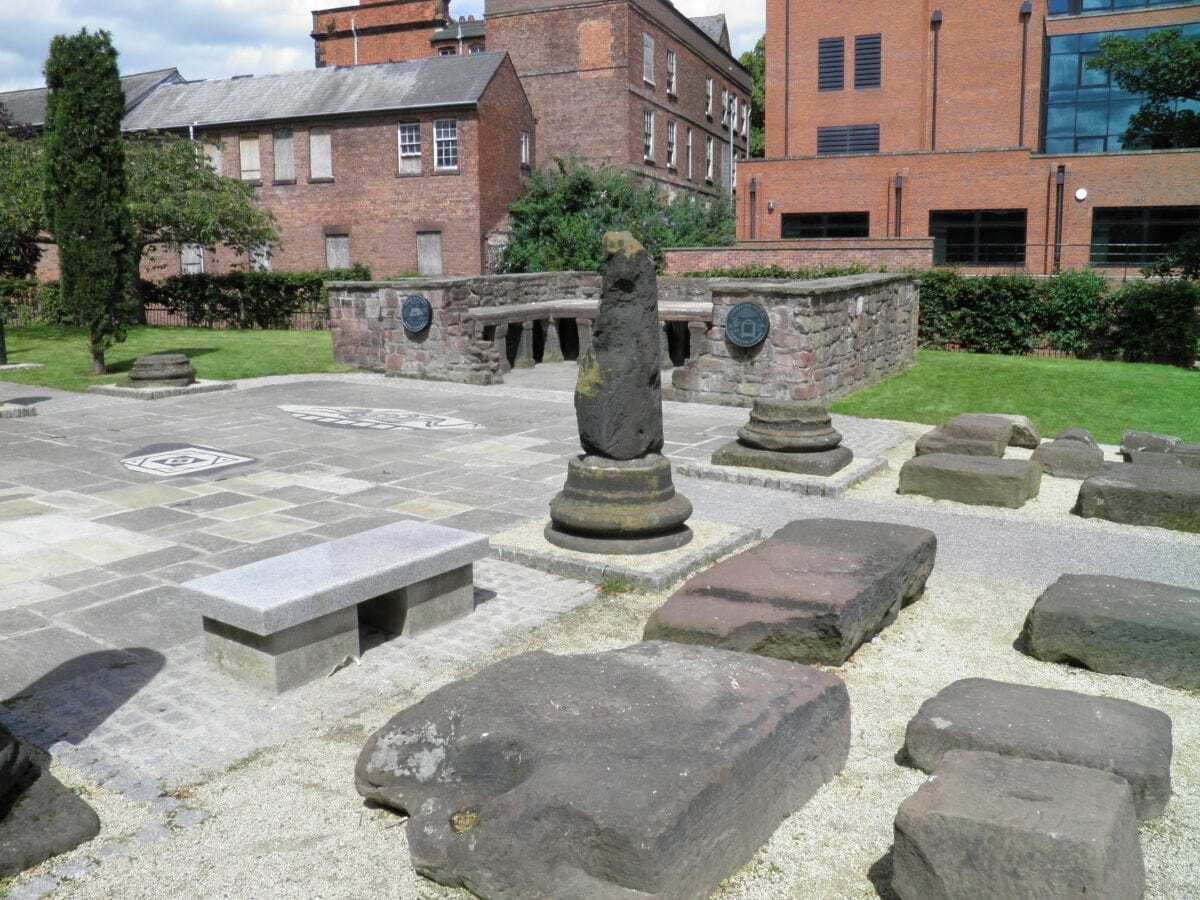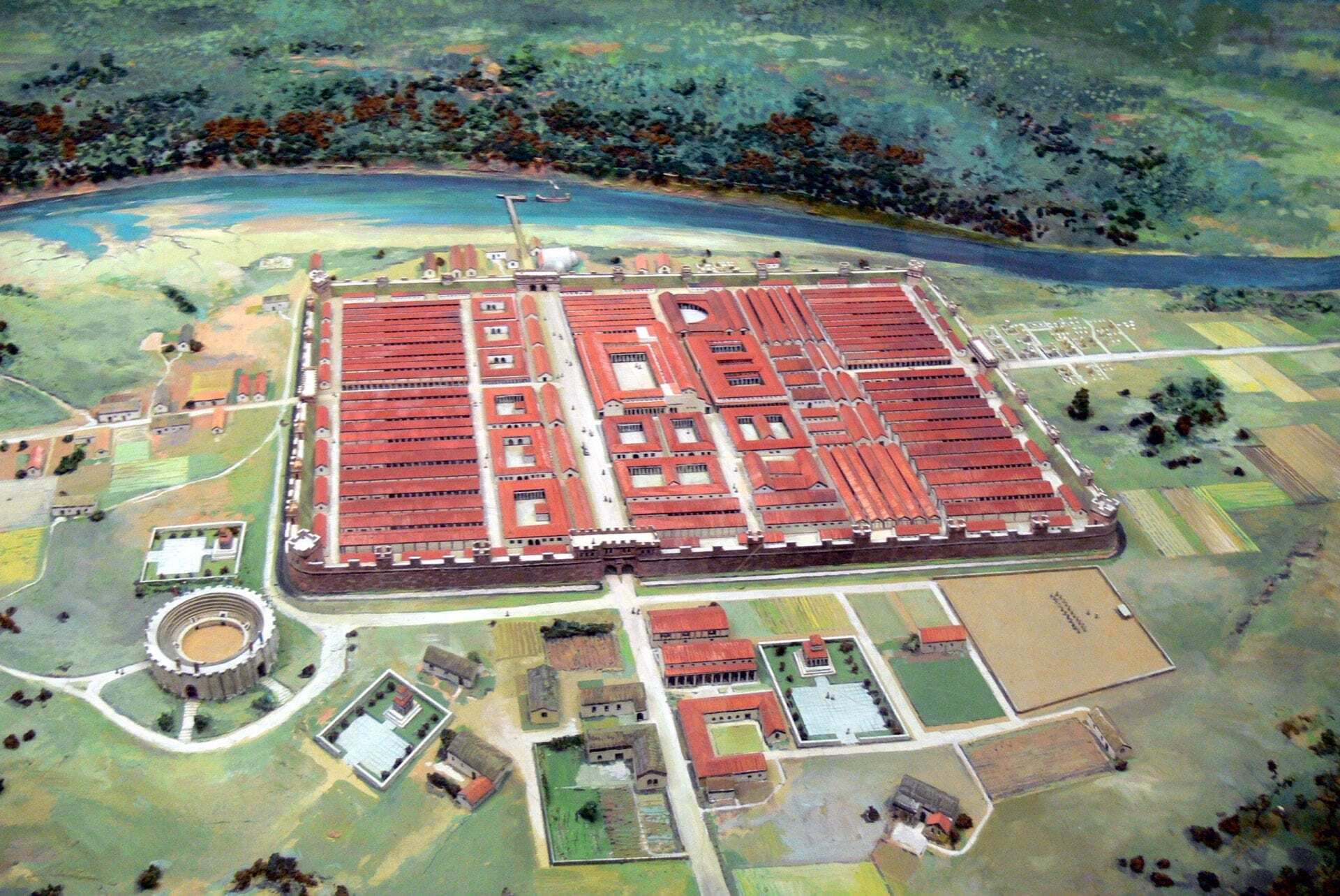Deva Victrix, also called Deva was a Roman fortress first built by the Legio secunda adiutrix around AD70 in the modern city of Chester in England.
It is believed that the name Deva Victrix derives from ‘goddess’, and the Roman fortress was named after the goddess of the River Dee; the Latin for ‘goddess’ is dea or diva. “Victrix” was probably derived from the Legio XX Valeria Victrix who were later garrisoned at Deva.
According to the 1st and 2nd-century geographer Claudius Ptolemy, the region was originally controlled by the Cornovii, a tribe whose lands bordered that of the Brigantes to the north and the Ordovices tribe to the west. When a treaty with the Brigantes failed, the Romans embarked on a military campaign to subdue the north and needed a new military base to coordinate their invasion.

The fortress was built on a sandstone bluff, controlling the bridge crossing at the River Dee and was laid out in the traditional ‘playing card’ shape – rectangular with rounded corners. Defence was provided by a 6-metre wide rampant and a 2-metre-wide ditch covering an area of 25 hectares (62 acres), making the compound one of the largest military complexes in Roman Britannia at the time.
The fortress initially contained barracks constructed using wattle and daub to garrison the troops, granaries, horrea, workshops, baths, and a “principia” headquarters.

Around AD88, the Legio XX Valeria Victrix took command at Deva Victrix and began to rebuild the fort, fortifying the complex with stone walls made from local sandstone and replacing earlier timber construction with stone buildings.
Over time, a settlement or vicus grew up around the fortress that benefited from a harbour and a large amphitheatre built to entertain the troops. The vicus eventually became a canabae legionis, meaning a town that emerged as a civilian settlement in the vicinity of a Roman legionary fortress and was essentially a veteran colony for retired soldiers.

Several settlements were established near to Deva Victrix, notably Boughton which supplied the fort with its water supply and Handbridge, where much of the stone was quarried. Handbridge also contains the Minerva shrine, the only known rock-cut shrine from that period in Britain.
The Notitia Dignitatum, a document believed to be from the late Roman Empire gives no mention of Deva Victrix maintaining a garrison around AD 395, suggesting the fort no longer served as a military outpost or was no longer considered a priority at a time when the Empires borders were being threatened elsewhere.

Some scholars believe that the vicus continued to thrive after the Roman withdrawal from Britannia, preserving a sub-Roman society. Archaeological evidence supports this by the discovery of amphorae and remnants of a local Romano-British culture that spoke vernacular Latin. After the arrival of the Anglo-Saxons, the settlement became known as Legacaestir, meaning “City of the Legions” in Old English.
Header Image – A model of Deva at the Grosvenor Museum – Image Credit :





